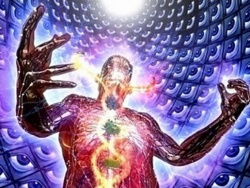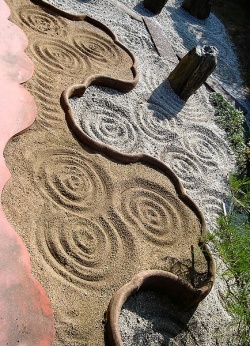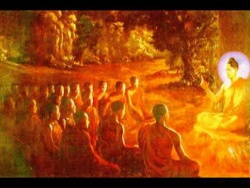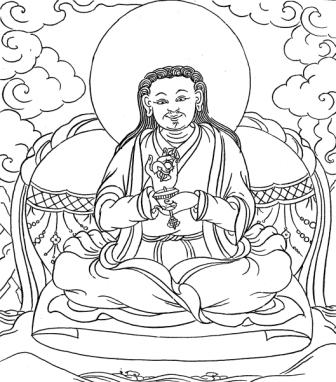Difference between revisions of "Rongzom Choki Zangpo"
(Created page with " <poem> Rongzom Chökyi Zangpo (Tibetan: {{BigTibetan|རོང་ཟོམ་ཆོས་ཀྱི་བཟང་པོ}}, Wylie: rong zom chos kyi bzang po)...") |
|||
| (4 intermediate revisions by the same user not shown) | |||
| Line 1: | Line 1: | ||
| + | {{SeealsoDPL/button}} | ||
| + | {{DisplayImages|3278|3628|13}} | ||
| + | |||
| + | |||
| + | |||
| + | |||
<poem> | <poem> | ||
| − | [[Rongzom Chökyi Zangpo]] ([[Tibetan]]: {{BigTibetan|རོང་ཟོམ་ཆོས་ཀྱི་བཟང་པོ}}, [[Wylie]]: [[rong zom chos kyi bzang po]]) (1012–1088), widely known as [[Rongzom]] [[Mahapandita]] or simply as [[Rongzompa]], was one of the most important [[scholars]] of the [[Nyingma school]] of [[Tibetan Buddhism]]. Together with [[Longchenpa]] and [[Ju Mipham]], he is often considered to be one of the three "[[omniscient]]" writers of the school. His elder contemporary [[Atiśa]] (980–1054) considered [[Rongzompa]] to be an [[incarnation]] of the [[Indian]] [[ācārya]] [[Kṛṣṇapāda]], the Great. | + | [[Rongzom Chökyi Zangpo]] ([[Tibetan]]: {{BigTibetan|[[རོང་ཟོམ་ཆོས་ཀྱི་བཟང་པོ]]}}, [[Wylie]]: [[rong zom chos kyi bzang po]]) (1012–1088), widely known as [[Rongzom]] [[Mahapandita]] or simply as [[Rongzompa]], was one of the most important [[scholars]] of the [[Nyingma school]] of [[Tibetan Buddhism]]. Together with [[Longchenpa]] and [[Ju Mipham]], he is often considered to be one of the three "[[omniscient]]" writers of the school. His elder contemporary [[Atiśa]] (980–1054) considered [[Rongzompa]] to be an [[incarnation]] of the [[Indian]] [[ācārya]] [[Kṛṣṇapāda]], the Great. The [[Tibetan]] historian [[Gö Lotsawa]] (1392–1481) said of [[Rongzom]] that no [[scholar]] in [[Tibet]] was his {{Wiki|equal}}. |
| − | A.W. Barber writes that [[Rongzom]] was the first to receive the entire [[Dzogchen]] teachings of both [[Vimalamitra]] and [[Vairocana]] after the [[time]] of those two [[masters]]. | + | A.W. Barber writes that [[Rongzom]] was the first to receive the entire [[Dzogchen]] teachings of both [[Vimalamitra]] and [[Vairocana]] after the [[time]] of those two [[masters]]. According to the [[Blue Annals]], [[Rongzom Chokyi Zangpo]] ... received the [[Semde]] ([[sems sde]]) teachings of the [[Dorje Dudjom]] [[transmission]] line. |
[[David Germano]] writes "In the eleventh century, [[Rongzom Chokyi Zangpo]] was without [[doubt]] the greatest [[Nyingma]] author, with extensive [[exoteric]] and [[esoteric]] commentaries." | [[David Germano]] writes "In the eleventh century, [[Rongzom Chokyi Zangpo]] was without [[doubt]] the greatest [[Nyingma]] author, with extensive [[exoteric]] and [[esoteric]] commentaries." | ||
| Line 9: | Line 15: | ||
[[Rongzom]] held that the [[views]] of [[sutra]] such as [[Madhyamaka]] were {{Wiki|inferior}} to that of [[tantra]], as Koppl notes: | [[Rongzom]] held that the [[views]] of [[sutra]] such as [[Madhyamaka]] were {{Wiki|inferior}} to that of [[tantra]], as Koppl notes: | ||
| − | By now we have seen that [[Rongzom]] regards the [[views]] of the [[Sutrayana]] as {{Wiki|inferior}} to those of [[Mantra]], and he underscores his commitment to the [[purity]] of all [[phenomena]] by criticizing the [[Madhyamaka]] [[objectification]] of the [[Wikipedia:Authenticity|authentic]] [[relative truth]]. | + | By now we have seen that [[Rongzom]] regards the [[views]] of the [[Sutrayana]] as {{Wiki|inferior}} to those of [[Mantra]], and he underscores his commitment to the [[purity]] of all [[phenomena]] by criticizing the [[Madhyamaka]] [[objectification]] of the [[Wikipedia:Authenticity|authentic]] [[relative truth]]. |
Writings | Writings | ||
| − | According to a catalog of the commentaries he codified, the collected works of [[Rongzompa]] amounted to over 100 volumes, the majority of which are no longer extant. In the 19th century, [[Ju Mipham]], who was particularly influenced by Rongzompa's writings,[7] attempted to [[gather]] the surviving works together. | + | According to a catalog of the commentaries he codified, the collected works of [[Rongzompa]] amounted to over 100 volumes, the majority of which are no longer extant. In the 19th century, [[Ju Mipham]], who was particularly influenced by [[Rongzompa's]] writings,[7] attempted to [[gather]] the surviving works together. |
Important surviving works of [[Rongzom Chokyi Zangpo]] include: | Important surviving works of [[Rongzom Chokyi Zangpo]] include: | ||
| − | Entering the Way of the [[Great Vehicle]] ([[Mahayana]]) ([[Tibetan]]: {{BigTibetan|ཐེག་པ་ཆེན་པོའི་ཚུལ་ལ་འཇུག་པ}}, [[Wylie]]: [[theg pa | + | Entering the Way of the [[Great Vehicle]] ([[Mahayana]]) ([[Tibetan]]: {{BigTibetan|[[ཐེག་པ་ཆེན་པོའི་ཚུལ་ལ་འཇུག་པ]]}}, [[Wylie]]: [[theg pa chen po’i tshul la ’jug pa]]) – presents a defense and explanation of the [[Dzogchen tradition]] in the context of the [[Mahayana]]. |
| − | A commentary on [[Padmasambhava's]] Key Instructions: A Rosary of | + | A commentary on [[Padmasambhava's]] Key Instructions: [[A Rosary of Views]] ([[Tibetan]]: {{BigTibetan|[[མན་ངག་ལྟ་ཕྲེང་གི་འགྲེལ་པ]]}}, [[Wylie]]: [[man ngag lta phreng gi 'grel pa]]) – presents the [[view]] of the [[Nyingma]] school's [[nine yanas]]. |
| − | A commentary on the Manjusrinama-Samgiti ([[Tibetan]]: {{BigTibetan|མཚན་ཡང་དག་པར་བརྗོད་པའི་འགྲེལ་པ་རྣམ་གསུམ་བཤད་པ}}, [[Wylie]]: [[mtshan | + | A commentary on the [[Manjusrinama-Samgiti]] ([[Tibetan]]: {{BigTibetan|[[མཚན་ཡང་དག་པར་བརྗོད་པའི་འགྲེལ་པ་རྣམ་གསུམ་བཤད་པ]]}}, [[Wylie]]: [[mtshan yang dag par brjod pa'i 'grel pa rnam gsum bshad pa]]) |
| − | A commentary on the [[Guhyagarbha Tantra]] ([[Tibetan]]: {{BigTibetan|[[རྒྱུད་རྒྱལ་གསང་བ་སྙིང་པོ་དཀོན་ཅོག་འགྲེལ]]}}, [[Wylie]]: rgyud rgyal | + | A commentary on the [[Guhyagarbha Tantra]] ([[Tibetan]]: {{BigTibetan|[[རྒྱུད་རྒྱལ་གསང་བ་སྙིང་པོ་དཀོན་ཅོག་འགྲེལ]]}}, [[Wylie]]: [[rgyud rgyal gsang ba snying po dkon cog 'grel]]) |
| − | Establishing the [[Divinity]] of [[Appearances]] ([[Tibetan]]: {{BigTibetan|སྣང་བ་ལྷར་བསྒྲུབ}}, [[Wylie]]: [[snang ba]] | + | Establishing the [[Divinity]] of [[Appearances]] ([[Tibetan]]: {{BigTibetan|[[སྣང་བ་ལྷར་བསྒྲུབ]]}}, [[Wylie]]: [[snang ba lhar bsgrub]]) – a short text that presents the [[logical]] grounds for the [[pure]] [[view]] of [[Buddhist tantra]]. This text has been translated into English (Köppl, 2008). |
Notes & references | Notes & references | ||
| Line 29: | Line 35: | ||
Barber, 1990 p.301 | Barber, 1990 p.301 | ||
Mandelbaum, Arthur (2007-08). "[[Nanam Dorje Dudjom]]". The [[Treasury of Lives]]: {{Wiki|Biographies}} of [[Himalayan]] [[Religious]] [[Masters]]. Retrieved 2013-08-10. | Mandelbaum, Arthur (2007-08). "[[Nanam Dorje Dudjom]]". The [[Treasury of Lives]]: {{Wiki|Biographies}} of [[Himalayan]] [[Religious]] [[Masters]]. Retrieved 2013-08-10. | ||
| − | Germano (2002) | + | [[Germano]] (2002) |
Koppl, Heidi. Establishing [[Appearances]] as [[Divine]]. [[Snow Lion Publications]] 2008, [[chapter]] 4. | Koppl, Heidi. Establishing [[Appearances]] as [[Divine]]. [[Snow Lion Publications]] 2008, [[chapter]] 4. | ||
[[Ju Mipham]] also wrote a short [[Guru Yoga]] practice focusing on [[Rongzom]] [[Tibetan]]: {{BigTibetan|དཔལ་རོང་ཟོམ་པཎྜི་ཏ་ཆེན་པོའི་བླ་མའི་རྣལ་བྱོར་བྱིན་རླབ་ཆར་འབེབས།}} | [[Ju Mipham]] also wrote a short [[Guru Yoga]] practice focusing on [[Rongzom]] [[Tibetan]]: {{BigTibetan|དཔལ་རོང་ཟོམ་པཎྜི་ཏ་ཆེན་པོའི་བླ་མའི་རྣལ་བྱོར་བྱིན་རླབ་ཆར་འབེབས།}} | ||
| + | |||
| + | {{W}} | ||
| + | |||
| + | [[Image:Rongzom.JPG|frame|Rongzom Chökyi Zangpo]] | ||
| + | '''[[Rongzom Chökyi Zangpo]]''' ([[Wyl.]] ''[[rong zom chos kyi bzang po]]''; Skt. [[Dharmabhadra]]) aka '''[[Rongzompa]]''' lived in the 11th century. His dates have been given as 1012-1088. He was born in [[Tsang rong]] and met [[Atisha]] in his youth. He mastered the teachings of both [[Nyingma]] and [[Sarma]] [[traditions]]. He translated many works on [[secret mantra]], some of which are preserved in the [[Kangyur]] and some of which did not survive. Likewise, many of his original writings have sadly been lost, but among those which are still to be found today are his commentary on the ''[[Guhyagarbha Tantra]]'', his introduction to [[mahayana]] called ''[[Introduction to the Way of the Great Vehicle]]'' (''[[theg pa chen po'i tshul la 'jug pa]]'') and his famous ''[[Establishing All Appearances as Divine]]'' (''[[snang ba lhar sgrub]]''). His commentary on ''The [[Secret Essence Tantra]]'' begins with the line: “The [[nature]] of the [[Three Jewels]] is the [[enlightened mind]],” and so it became known as ''[[The Jewel Commentary]]''. As well as his remarkable {{Wiki|scholarship}}, he also [[manifested]] many [[signs]] of his deep [[realization]]. The historian [[Gö Lotsawa]] said of him: “In this snowland of [[Tibet]] no [[scholar]] has appeared who has been his {{Wiki|equal}}.” | ||
| + | |||
| + | ==Writings== | ||
| + | *[[Establishing All Appearances as Divine]] (''[[snang ba lhar sgrub]]'') | ||
| + | *[[Introduction to the Way of the Great Vehicle]] (''[[theg pa chen po'i tshul la 'jug pa]]'') | ||
| + | *[[The Jewel Commentary]] | ||
| + | *Commentary on ''[[Weapon-like Introduction to Speech]]'' | ||
| + | |||
| + | ==Further Reading== | ||
| + | *[[Dudjom Rinpoche]], ''[[The Nyingma School of Tibetan Buddhism, Its Fundamentals and History]]'', trans. and ed. by [[Gyurme Dorje]] (Boston: Wisdom, 1991), pp. 703–9. | ||
| + | *[[Nyoshul Khenpo]], ''[[A Marvelous Garland of Rare Gems: Biographies of Masters of Awareness in the Dzogchen Lineage]]'' ([[Junction City]]: [[Padma Publications]], 2005), page 53. | ||
| + | *Orna Almogi, 'Sources on the [[Life]] and Works of the Eleventh Century [[Tibetan]] [[Scholar]] [[Rong Zom Chos Kyi Bzang Po]]: A Brief Survey' in Henk Bleder, ed. ''[[Tibet]], Past and Present. [[Tibetan Studies]] I: Proceedings of the Ninth Seminar of the International Association for [[Tibetan Studies]]'', Leiden, 2002, pp. 67-80. | ||
| + | *Heidi I. Koppl, ''[[Establishing Appearances as Divine]]'', [[Snow Lion]], 2008. | ||
| + | {{RigpaWiki}} | ||
| + | |||
| + | ===Short {{Wiki|Biography}}=== | ||
| + | '''[[Rongzom Chokyi Zangpo]]''' (Tib: [[rong zom chos kyi bzang po]]), also known as '''[[Rongzom Mahapandita]]''' (11-12th century) | ||
| + | [[Image:Rongzompa.jpg|frame|Rongzom Mahapandita Dharmabhadra]] | ||
| + | [[Rongzom]] is widely [[acknowledged]] as one of the greatest and most influential [[masters]] of the [[Tibetan Buddhism]]. Along with [[Longchenpa|Longchen Rabjam]], he is often cited as one of the two "[[omniscient]] ones" of the [[Nyingma|Ancient Translation School]], the [[Nyingma|Ngagyur Nyingma]] ([[snga 'gyur rnying ma]]). Said to be the [[reincarnation]] of an [[Indian]] [[pandita]] named Smrtijnanakirti, [[Rongzom]] was renowned for his [[mastery]] of the [[Sanskrit]] [[language]]. He is also said to have had an unparralleled [[understanding]] of the [[Buddhist doctrine]], and of the [[Nyingma teachings]] in particular. The [[master]] and historian [[Go Lotsawa]] said of [[Rongzom]] that no [[scholar]] in [[Tibet]] is his {{Wiki|equal}}. | ||
| + | ==={{Wiki|Literary}} Works=== | ||
| + | See '''[[Writings of Rongzom]]'''<br> | ||
| + | *[[gsang sngags rdo rje theg pa'i tshul las snang ba ltar bsgrub pa]] | ||
| + | **[[Establishing Appearances as Divine]] [[Rongzom Chokyi Zangpo]] on {{Wiki|Reasoning}}, [[Madhyamaka]], and [[Purity]] | ||
| + | ===Main [[Teachers]]=== | ||
| + | *[[Doton Senge]]<br> | ||
| + | *[[Garton Tsultrim Sangpo]]<br> | ||
| + | |||
| + | ===Main Students=== | ||
| + | *His sons: Zijibar and Bumbar<br> | ||
| + | *[[Korup Lotsawa]]<br> | ||
| + | *[[Marpa Topa]]<br> | ||
| + | *Khukpa Letse<br> | ||
| + | |||
| + | ===Alternate Names=== | ||
| + | *[[Rongzom Mahapandita]]<br> | ||
| + | *[[rong zom]]; [[Rongzom]]<br> | ||
| + | *[[rong zom chos kyi bzang po]]<br> | ||
| + | *[[Dharmabhadra]] | ||
| + | ===Other Reference Sources=== | ||
| + | [[Information]] on the [[life]] and works of [[Rongzom]] can be found in [[Dudjom's]] ''[[The Nyingma School of Tibetan Buddhism]]'' and Petit's ''[[Beacon of Certainty]]''. | ||
| + | |||
| + | ===Internal Links=== | ||
| + | *Add double-brackets "[[ ]]" around any relevant [[word]] or [[phrase]] and it will create a new page for that term or link to an already [[existing]] page | ||
| + | |||
| + | ===External Links=== | ||
| + | *[http://www.tbrc.org ADD TBRC link here] | ||
</poem> | </poem> | ||
| − | {{ | + | {{RangjungWiki}} |
| + | [[Category:Nyingma lineage]] | ||
Latest revision as of 14:19, 16 December 2015
Click here to see other articles relating to word Rongzom Choki Zangpo
Rongzom Chökyi Zangpo (Tibetan: རོང་ཟོམ་ཆོས་ཀྱི་བཟང་པོ, Wylie: rong zom chos kyi bzang po) (1012–1088), widely known as Rongzom Mahapandita or simply as Rongzompa, was one of the most important scholars of the Nyingma school of Tibetan Buddhism. Together with Longchenpa and Ju Mipham, he is often considered to be one of the three "omniscient" writers of the school. His elder contemporary Atiśa (980–1054) considered Rongzompa to be an incarnation of the Indian ācārya Kṛṣṇapāda, the Great. The Tibetan historian Gö Lotsawa (1392–1481) said of Rongzom that no scholar in Tibet was his equal.
A.W. Barber writes that Rongzom was the first to receive the entire Dzogchen teachings of both Vimalamitra and Vairocana after the time of those two masters. According to the Blue Annals, Rongzom Chokyi Zangpo ... received the Semde (sems sde) teachings of the Dorje Dudjom transmission line.
David Germano writes "In the eleventh century, Rongzom Chokyi Zangpo was without doubt the greatest Nyingma author, with extensive exoteric and esoteric commentaries."
Rongzom held that the views of sutra such as Madhyamaka were inferior to that of tantra, as Koppl notes:
By now we have seen that Rongzom regards the views of the Sutrayana as inferior to those of Mantra, and he underscores his commitment to the purity of all phenomena by criticizing the Madhyamaka objectification of the authentic relative truth.
Writings
According to a catalog of the commentaries he codified, the collected works of Rongzompa amounted to over 100 volumes, the majority of which are no longer extant. In the 19th century, Ju Mipham, who was particularly influenced by Rongzompa's writings,[7] attempted to gather the surviving works together.
Important surviving works of Rongzom Chokyi Zangpo include:
Entering the Way of the Great Vehicle (Mahayana) (Tibetan: ཐེག་པ་ཆེན་པོའི་ཚུལ་ལ་འཇུག་པ, Wylie: theg pa chen po’i tshul la ’jug pa) – presents a defense and explanation of the Dzogchen tradition in the context of the Mahayana.
A commentary on Padmasambhava's Key Instructions: A Rosary of Views (Tibetan: མན་ངག་ལྟ་ཕྲེང་གི་འགྲེལ་པ, Wylie: man ngag lta phreng gi 'grel pa) – presents the view of the Nyingma school's nine yanas.
A commentary on the Manjusrinama-Samgiti (Tibetan: མཚན་ཡང་དག་པར་བརྗོད་པའི་འགྲེལ་པ་རྣམ་གསུམ་བཤད་པ, Wylie: mtshan yang dag par brjod pa'i 'grel pa rnam gsum bshad pa)
A commentary on the Guhyagarbha Tantra (Tibetan: རྒྱུད་རྒྱལ་གསང་བ་སྙིང་པོ་དཀོན་ཅོག་འགྲེལ, Wylie: rgyud rgyal gsang ba snying po dkon cog 'grel)
Establishing the Divinity of Appearances (Tibetan: སྣང་བ་ལྷར་བསྒྲུབ, Wylie: snang ba lhar bsgrub) – a short text that presents the logical grounds for the pure view of Buddhist tantra. This text has been translated into English (Köppl, 2008).
Notes & references
Roerich (1949) p.160
གཞན་ཕན་ཆོས་ཀྱི་ནང་བ p.25
Barber, 1990 p.301
Mandelbaum, Arthur (2007-08). "Nanam Dorje Dudjom". The Treasury of Lives: Biographies of Himalayan Religious Masters. Retrieved 2013-08-10.
Germano (2002)
Koppl, Heidi. Establishing Appearances as Divine. Snow Lion Publications 2008, chapter 4.
Ju Mipham also wrote a short Guru Yoga practice focusing on Rongzom Tibetan: དཔལ་རོང་ཟོམ་པཎྜི་ཏ་ཆེན་པོའི་བླ་མའི་རྣལ་བྱོར་བྱིན་རླབ་ཆར་འབེབས།
Source
Wikipedia:Rongzom Choki Zangpo
Rongzom Chökyi Zangpo (Wyl. rong zom chos kyi bzang po; Skt. Dharmabhadra) aka Rongzompa lived in the 11th century. His dates have been given as 1012-1088. He was born in Tsang rong and met Atisha in his youth. He mastered the teachings of both Nyingma and Sarma traditions. He translated many works on secret mantra, some of which are preserved in the Kangyur and some of which did not survive. Likewise, many of his original writings have sadly been lost, but among those which are still to be found today are his commentary on the Guhyagarbha Tantra, his introduction to mahayana called Introduction to the Way of the Great Vehicle (theg pa chen po'i tshul la 'jug pa) and his famous Establishing All Appearances as Divine (snang ba lhar sgrub). His commentary on The Secret Essence Tantra begins with the line: “The nature of the Three Jewels is the enlightened mind,” and so it became known as The Jewel Commentary. As well as his remarkable scholarship, he also manifested many signs of his deep realization. The historian Gö Lotsawa said of him: “In this snowland of Tibet no scholar has appeared who has been his equal.”
==Writings==
- Establishing All Appearances as Divine (snang ba lhar sgrub)
- Introduction to the Way of the Great Vehicle (theg pa chen po'i tshul la 'jug pa)
- The Jewel Commentary
- Commentary on Weapon-like Introduction to Speech
==Further Reading==
- Dudjom Rinpoche, The Nyingma School of Tibetan Buddhism, Its Fundamentals and History, trans. and ed. by Gyurme Dorje (Boston: Wisdom, 1991), pp. 703–9.
- Nyoshul Khenpo, A Marvelous Garland of Rare Gems: Biographies of Masters of Awareness in the Dzogchen Lineage (Junction City: Padma Publications, 2005), page 53.
- Orna Almogi, 'Sources on the Life and Works of the Eleventh Century Tibetan Scholar Rong Zom Chos Kyi Bzang Po: A Brief Survey' in Henk Bleder, ed. Tibet, Past and Present. Tibetan Studies I: Proceedings of the Ninth Seminar of the International Association for Tibetan Studies, Leiden, 2002, pp. 67-80.
- Heidi I. Koppl, Establishing Appearances as Divine, Snow Lion, 2008.
Source
RigpaWiki:Rongzom Choki Zangpo
===Short Biography===
Rongzom Chokyi Zangpo (Tib: rong zom chos kyi bzang po), also known as Rongzom Mahapandita (11-12th century)
Rongzom is widely acknowledged as one of the greatest and most influential masters of the Tibetan Buddhism. Along with Longchen Rabjam, he is often cited as one of the two "omniscient ones" of the Ancient Translation School, the Ngagyur Nyingma (snga 'gyur rnying ma). Said to be the reincarnation of an Indian pandita named Smrtijnanakirti, Rongzom was renowned for his mastery of the Sanskrit language. He is also said to have had an unparralleled understanding of the Buddhist doctrine, and of the Nyingma teachings in particular. The master and historian Go Lotsawa said of Rongzom that no scholar in Tibet is his equal.
===Literary Works===
See Writings of Rongzom
===Main Teachers===
===Main Students===
- His sons: Zijibar and Bumbar
- Korup Lotsawa
- Marpa Topa
- Khukpa Letse
===Alternate Names===
===Other Reference Sources===
Information on the life and works of Rongzom can be found in Dudjom's The Nyingma School of Tibetan Buddhism and Petit's Beacon of Certainty.
===Internal Links===
- Add double-brackets "[[ ]]" around any relevant word or phrase and it will create a new page for that term or link to an already existing page
===External Links===




